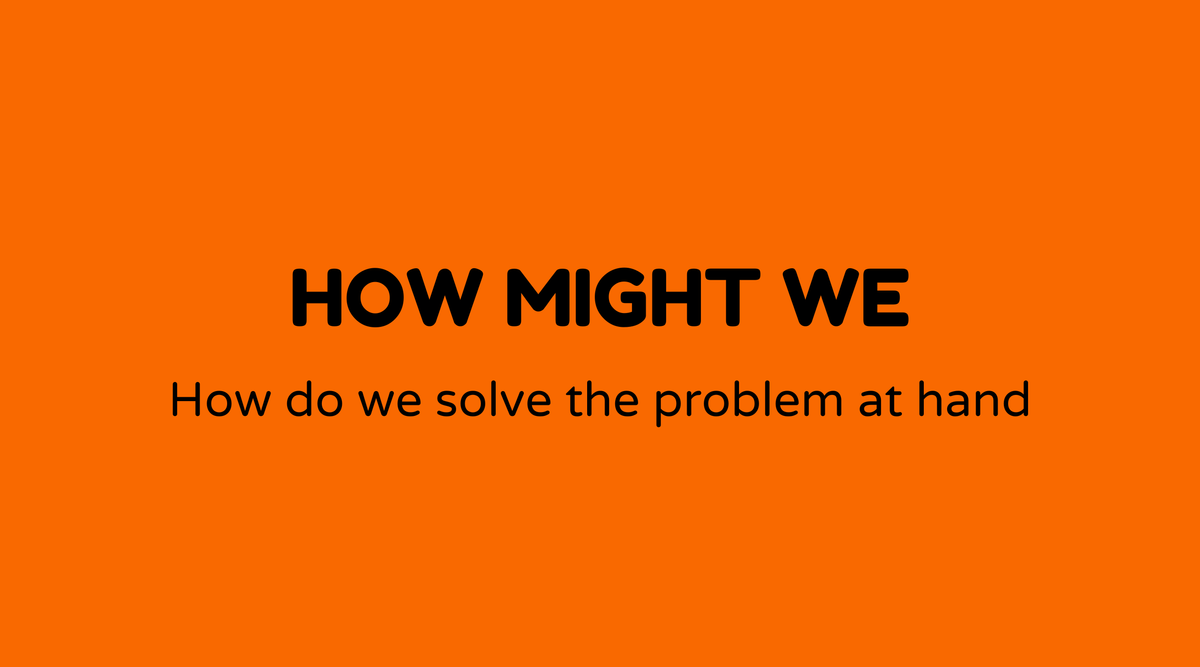How Might We

Overview of How Might We Workshop:
In the field of innovation and creative problem-solving, the How Might We Workshop serves as an effective method for teams tackling challenges. This process involves structured brainstorming to reveal potential solutions to specific issues. By reformulating problems as open-ended questions that begin with "How Might We," the workshop promotes creative, unconventional thinking.
This method is especially favored in design thinking practices, where cultivating a collaborative environment is essential. The focus here is more on exploring options rather than resolving issues immediately. Participants are encouraged to express their thoughts freely, which fosters a lively exchange of ideas that may lead to innovative insights.
Why How Might We Workshop Matters:
What makes a How Might We Workshop worthwhile? These sessions engage everyone, align goals, and inspire collective efforts to address challenges. They turn vague or daunting problems into manageable, solvable questions. This not only invites contributions from all team members but also reduces obstacles to creativity.
Using the "How Might We" framework, teams transition from a mindset of limitless options to one that is focused but adaptable. It encourages participants to maintain an open mindset and utilize their shared knowledge. Additionally, it’s an established approach for generating numerous ideas, which can aid businesses in remaining competitive. For example, IDEO, a design firm recognized for its innovative spirit, actively supports these workshops in their projects.
What is a How Might We Workshop:
A How Might We Workshop is an interactive session where participants work together to reframe and tackle challenges. The workshop revolves around creating "How Might We" questions that act as a launching point for creativity. These questions invite various interpretations and approaches while providing a clear focus.
Typically, this workshop includes methods like brainstorming and idea grouping to sift through thoughts and identify valuable insights. The structure is flexible enough to motivate participants, yet organized to maintain attention on the desired outcome. A facilitator often leads the workshop, guiding discussions while ensuring everyone's input is valued.
How do you conduct a How Might We Workshop:
Conducting a How Might We Workshop involves some planning but generally follows straightforward steps:
-
Set the Stage: Clarify the main problem or challenge that needs to be addressed. This lays the groundwork for the workshop and directs participant focus.
-
Formulate Questions: Break down the primary issue into smaller, more specific "How Might We" questions. Ensure each question is open-ended and connected to the main topic.
-
Invite Participants: Assemble a varied group of individuals who bring diverse perspectives and skills. This variety enriches the brainstorming experience.
-
Facilitate Brainstorming: Encourage participants to share ideas freely. Use sticky notes or digital platforms to record thoughts without immediate judgment.
-
Cluster and Evaluate Ideas: Group similar concepts and begin evaluating them based on feasibility and potential impact.
-
Select and Prioritize: Collaborate as a team to determine which ideas will proceed to development or testing phases.
-
Plan Next Steps: Establish clear action items after the workshop to ensure that ideas progress beyond the session.
Sample Agenda for a How Might We Workshop:
| Time | Activity | Detail |
|---|---|---|
| 0:00 - 0:15 | Introduction and Icebreaker | Welcome the group, introduce participants, and engage in a warm-up activity. |
| 0:15 - 0:30 | Define the Problem | Clarify the main challenge and set the context for the workshop. |
| 0:30 - 1:00 | Create "How Might We" Questions | Break the primary problem into 'HMW' questions that spark interest. |
| 1:00 - 1:45 | Idea Generation | Brainstorm solutions, write ideas individually, and share with the team. |
| 1:45 - 2:15 | Clustering and Evaluation | Group ideas by themes and discuss the potential of each group. |
| 2:15 - 2:45 | Prioritization | Identify the most promising ideas based on criteria like feasibility and impact. |
| 2:45 - 3:00 | Next Steps and Closing | Develop plans for action on chosen ideas and assign responsibilities. |
Examples of How Might We Workshop:
-
At Google, teams employed "How Might We" workshops to address user interface challenges, resulting in clearer, more user-friendly designs.
-
IDEO famously applied this process to create a new shopping cart, challenging conventional retail design.
-
A small startup might utilize these workshops to refine service delivery by asking, "How might we deliver this service faster without compromising quality?"
FAQs
What is the primary goal of a How Might We workshop?
- The main purpose is to generate creative solutions by reframing challenges as open-ended questions that inspire innovation.
How long does a typical How Might We workshop last?
- Generally, they span 2 to 3 hours, though this can vary based on complexity and participant availability.
Who should participate in a How Might We workshop?
- A diverse mix of stakeholders with various insights and expertise related to the challenge is ideal.
How do you come up with effective "How Might We" questions?
- Start with the core issue, then think about aspects needing change or improvement. Make sure they are open-ended and actionable.
Can How Might We workshops be conducted virtually?
- Yes, utilizing platforms like Zoom or Microsoft Teams along with digital whiteboards like Miro or MURAL.
What should be done after a How Might We workshop?
- Create an action plan for each prioritized idea, assign roles, and establish a timeline for implementation.



